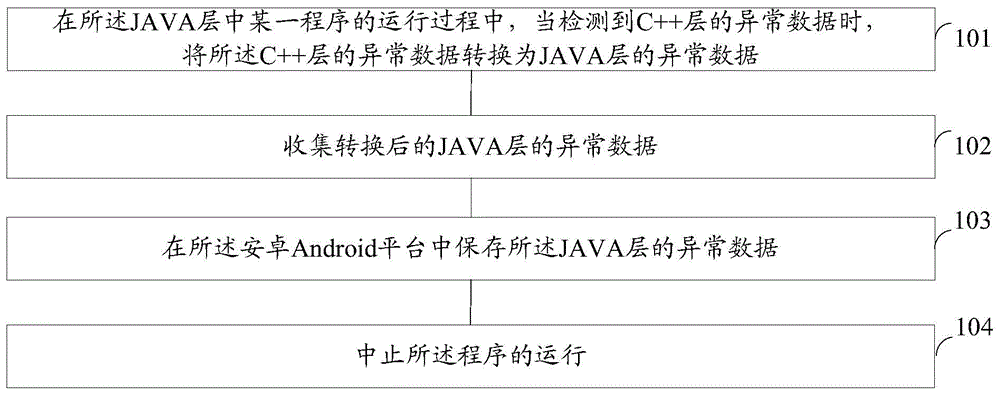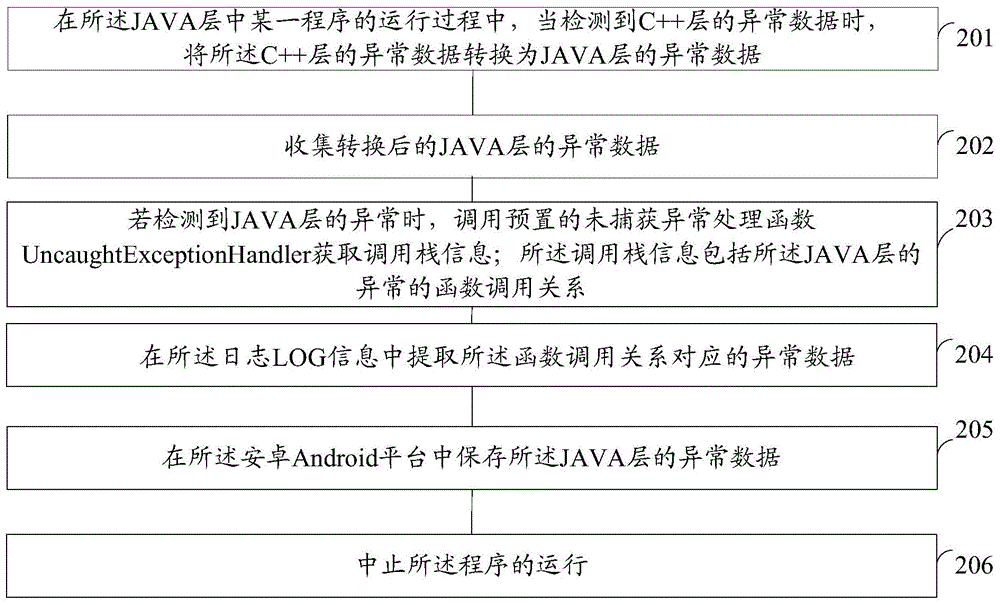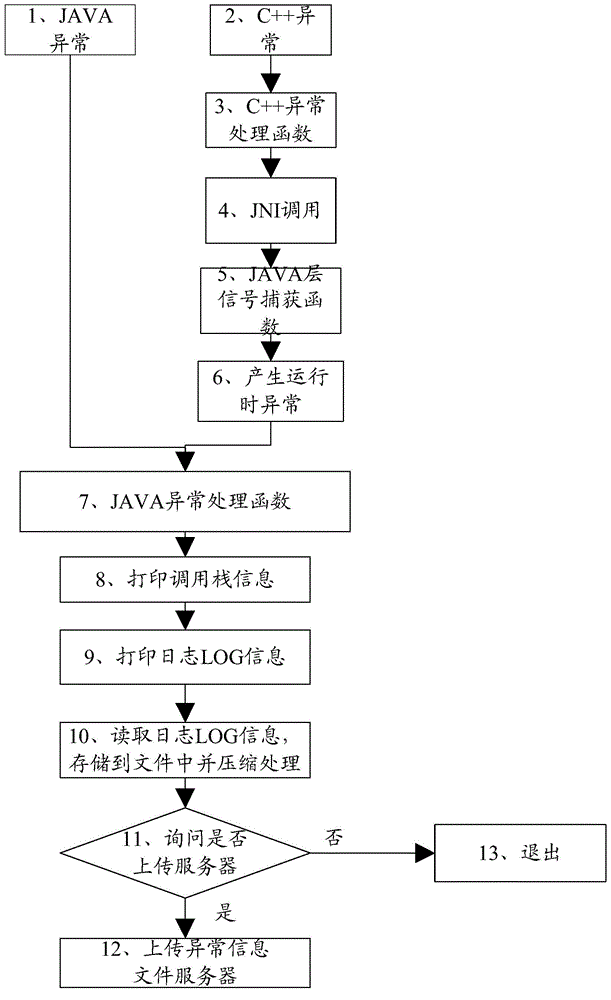Method and device for exception handling of Android platform
An exception handling and platform technology, applied in the field of exception handling, can solve the problems of not supporting direct printing of call stack information, unable to obtain C++ layer exception information, unable to collect C++ layer exception information, etc., so as to achieve unified processing and improve processing. performance effect
- Summary
- Abstract
- Description
- Claims
- Application Information
AI Technical Summary
Problems solved by technology
Method used
Image
Examples
Embodiment 1
[0060] refer to figure 1 , showing a flow chart of the steps of Embodiment 1 of a method for handling exceptions on the Android platform of the present invention, the Android platform may include a JAVA layer and a C++ layer, and specifically may include the following steps:
[0061] Step 101, during the operation of a certain program in the JAVA layer, when abnormal data of the C++ layer is detected, the abnormal data of the C++ layer is converted into abnormal data of the JAVA layer;
[0062] In a specific implementation, the platform on which the Android system is installed may be a mobile phone, a computer and other devices.
[0063] In the Android platform, it can be divided into the JAVA layer of the application program written in JAVA code, such as the Framework layer, and the C++ layer of the virtual machine written in C++ code, such as the Native layer. The operation of applications written in JAVA depends on the JAVA virtual machine. The JAVA virtual machine can fac...
Embodiment 2
[0084] refer to figure 2 , shows a flow chart of the steps of Embodiment 2 of an Android platform exception handling method of the present invention, the Android platform may include a JAVA layer and a C++ layer, and specifically may include the following steps:
[0085] Step 201, during the operation of a certain program in the JAVA layer, when abnormal data of the C++ layer is detected, the abnormal data of the C++ layer is converted into abnormal data of the JAVA layer;
[0086] In a preferred embodiment of the present invention, an exception handling function corresponding to the exception data of the C++ layer can be registered in the Android platform of Android; the step 201 can include the following sub-steps:
[0087] Sub-step S31, calling the preset query or setting the signal processing function sigaction to obtain the abnormal data of the C++ layer;
[0088] Sub-step S32, using the exception handling function to call the JAVA local interface JNI;
[0089] Sub-ste...
Embodiment 3
[0142] refer to Figure 4 , showing a structural block diagram of a device embodiment of an Android platform exception handling of the present invention, the Android platform may include a JAVA layer and a C++ layer, and specifically may include the following modules:
[0143] The conversion module 401 is used to convert the abnormal data of the C++ layer into the abnormal data of the JAVA layer when abnormal data of the C++ layer is detected during the operation of a certain program in the JAVA layer;
[0144] In a preferred embodiment of the present invention, various exception handling functions corresponding to various types of abnormal data of the C++ layer can be registered in the Android platform of Android; the conversion module 401 can include the following submodules:
[0145] A function call unit, used to call a preset query or set a signal processing function sigaction to obtain the abnormal data of the C++ layer;
[0146] a function acquiring unit, configured to ...
PUM
 Login to View More
Login to View More Abstract
Description
Claims
Application Information
 Login to View More
Login to View More - R&D
- Intellectual Property
- Life Sciences
- Materials
- Tech Scout
- Unparalleled Data Quality
- Higher Quality Content
- 60% Fewer Hallucinations
Browse by: Latest US Patents, China's latest patents, Technical Efficacy Thesaurus, Application Domain, Technology Topic, Popular Technical Reports.
© 2025 PatSnap. All rights reserved.Legal|Privacy policy|Modern Slavery Act Transparency Statement|Sitemap|About US| Contact US: help@patsnap.com



